Varicose Vein Treatment: Ambulatory Phlebectomy
Bulging varicose veins are the most obvious and unsightly sign of vein disease. These large, distended veins appear right under the skin surface. When veins deeper in the leg become diseased and blood fails to return to the heart normally, these small veins near the surface begin to fill and stretch. This causes the veins to become large, twisted and gnarly. Not only do they affect the appearance of legs, but they can cause leg pain and achiness as well! So how do we get rid of these annoying veins?
Examination and Diagnosis
The first step to treating bulging varicose veins is a thorough examination and diagnosis. An ultrasound is performed to evaluate the veins in your leg. The bulging veins you see on the surface are caused by deeper sources of reflux. Reflux is the backward movement of blood, pooling in the legs instead of returning to the heart. Once all sources of vein disease are determined a diagnosis and treatment plan is made. Removing bulging veins is often the last step in the treatment plan. Think of it as a river and tributaries. You can’t shut down the tributaries without first stopping the flow in the river. This means ablations of large veins need to be performed before removing the smaller bulging veins on the surface.
veins is a thorough examination and diagnosis. An ultrasound is performed to evaluate the veins in your leg. The bulging veins you see on the surface are caused by deeper sources of reflux. Reflux is the backward movement of blood, pooling in the legs instead of returning to the heart. Once all sources of vein disease are determined a diagnosis and treatment plan is made. Removing bulging veins is often the last step in the treatment plan. Think of it as a river and tributaries. You can’t shut down the tributaries without first stopping the flow in the river. This means ablations of large veins need to be performed before removing the smaller bulging veins on the surface.
Procedure
Bulging varicose vein treatment requires an in-office procedure called ambulatory phlebectomy. This procedure generally takes an hour to an hour and a half to complete. You will be offered medication to help you relax before the procedure. While you are standing, the bulging veins will be marked with a pen so the problem areas are apparent while you are lying. The leg will then be prepped in sterile-fashion to prevent infection. The physician will then anesthetize the area around the varicose vein. Once the area is numb, the doctor will make tiny incisions next to the vein. Through these incisions, the problem vein will be removed. Steri-strips are then applied to the incisions and a bandage and compression stocking will be put on the leg.
Post-Procedure
After the procedure, you are encouraged to resume normal daily activity. We ask that you avoid strenuous exercise and heavy lifting for one week. It is best to keep the leg clean and dry for five days for proper healing and to prevent infection. To further prevent infection, you will be given an antibiotic to take for 5-7 days following the procedure. We also recommend taking ibuprofen three times a day following the procedure to help with post-procedure inflammation and pain. Typically recovery is easy and most patients will be fully recovered by two weeks. It is common and expected to have a fair amount of bruising in the area of treatment. It is also normal to develop small hard bumps under the skin where the vein was removed. This is caused by areas of trapped blood and will resolve within a few weeks after the procedure.
Risks and Complications
As with any medical procedure, there are potential risks and complications. Complications include:
- Local area of numbness
- Superficial venous thrombosis (SVT)
- Deep Vein Thrombosis (DVT)
- Infection
Though these complications are uncommon, inform your physician immediately if signs of complications occur.
The specialists at IVC® have been performing varicose vein treatment in Utah for over 10 years! If you suffer from the pain and appearance of varicose veins, call us today for a consultation or a free vein screening.


